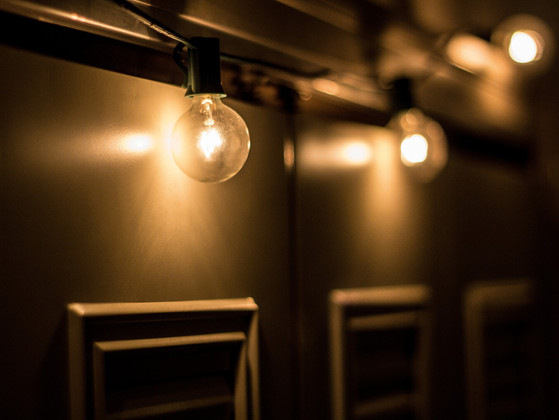
Tasteful Art Lighting Tips: How to Turn Your Home Into a Gallery
12/27/22
Pictures are worth more than 1,000 words! More than $50 billion worth of art and antiques were sold around the world in 2021. Buying a work of art can make your house more beautiful and create conversations with friends and family.
But your painting is meaningless if you don't have good art lighting. Unfortunately, art lighting is about more than turning on the lights to look at your painting. Finding the right lighting involves answering a few questions.
How can you assess your lighting needs? What types of lightbulbs and lighting fixtures are there? How should you hang your artwork?
Get the facts and you can enjoy your hanging art the right way in no time. Here is your quick guide.
Evaluate Your Current Lighting
Before you buy hanging art or an art light fixture, you should take a look at the room the art will go in. Turn on the lights and open the windows to see how much artificial and natural light you have.
If the room is dark, you need to add additional lighting. Keep in mind that sunlight can damage works of art, so you may want to hang your fine art away from the windows. This means that you may need to install a new light fixture on your ceiling or wall.
If you have too much light, you may need to adjust the bulbs. Try to find ones with a moderate number of lumens. You can also install dimmers on your fixtures so the room is not too bright.
Examine Different Types of Lightbulbs
Besides brightness, you should think about other factors in your light bulbs. Your bulbs should produce a neutral color temperature.
The Color Rendering Index determines how faithfully a light bulb renders the colors of natural sunlight. A CRI value of 100 indicates that a lightbulb almost perfectly resembles natural sunlight. Try to find lights with very high CRI ratings.
Besides these factors, you should look at a few kinds of lightbulbs. LED lightbulbs are very energy efficient, and they can last over 50,000 hours. They are the ideal lightbulb for illuminating wall art, though they can have a high upfront cost.
If you're looking to save money, you should install halogen bulbs. These are the traditional bulbs installed in art galleries and homes with collections of hanging art. They can produce significant heat and UV rays, so make sure they are a slight distance away from your artwork.
Do not use incandescent light bulbs to light your artwork, as they can produce significant heat and they burn out quickly. Never use compact fluorescent or xenon bulbs, as they produce UV rays.
Select the Best Light Fixtures
Track lighting is the standard light fixture used in homes to display artwork. You can place several bulbs on the track, illuminating different parts of your artwork or different works of art on the same wall. Track lights can be expensive, but they are long-lasting and sleek.
Accent fixtures have single lightbulbs. You can find many different fixtures, with some being more expensive than others. Popular types of accent fixtures include wall sconces and floodlights.
Recessed bulbs are hidden within the ceiling, creating a minimalist aesthetic. You can angle the bulbs to shine on your artwork, though most recessed fixtures point straight down. This makes recessed fixtures good for sculptures and textiles.
If you want to save space on your ceiling, you can install wall washers that go on the wall above your artwork. These fixtures create light that covers an entire wall. If you are installing a large painting, a wall washer may provide enough illumination to light all features of the artwork.
Picture lights go directly on the frame. These fixtures direct light onto the artwork without illuminating the wall or surrounding features. They are very small, so you can attach them to frames without worrying about damaging the art.
Hang Your Artwork Properly
Your lights will not work if you do not know how to hang art. The center of a photograph or painting should be roughly five feet off the ground, which is around the average eye height. If you're taller or shorter, you should adjust your artwork until you can look at the center of the piece without straining your neck.
When you are hanging multiple pieces on a wall, you should space them out. Leave empty space in between the pieces so your eye has a chance to rest. The pieces should be in similar frames, as different frames can cause a distracting juxtaposition.
If you're not familiar with hanging art, you should ask a professional to hang your artwork up for you. Hammering nails into your wall can damage it.
If you are going to hang a piece by yourself, you should consider using adhesive hooks and clamps. These tools will keep your piece on the wall without damaging the paint or walling materials.
After you've hung your artwork up, you should test your lighting fixtures on it. See if you have enough illumination and if the color temperature and brightness are right. Keep adjusting your fixtures and bulbs until you are happy.
Find the Perfect Art Lighting
You need art lighting to truly enjoy your fine art. Take a look at your lighting and figure out if you need to make your home brighter or use new bulbs. Switch to LEDs so you save money on electricity and avoid producing UV radiation.
Look at a few different light fixtures. Track lights are fine for most homes, but recessed lights conceal gangly fixtures and picture lights save room on the ceiling. Hang your work properly with professional help.
Don't drive far for great art lighting. Birddog Lighting provides premium LED fixtures. Browse our store today.


